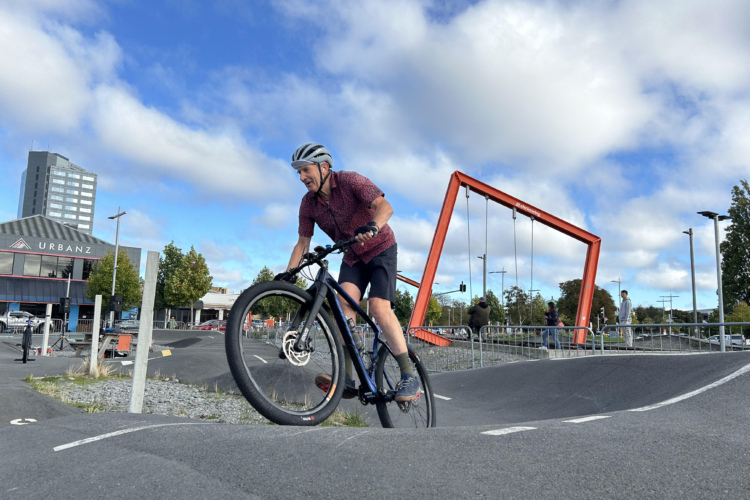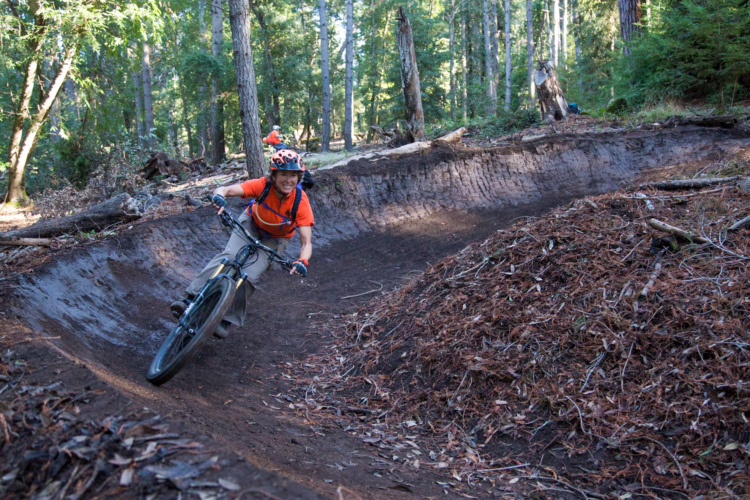
A few years ago, Specialized introduced and popularized a concept brought about by modern geometry: consumers could buy a frame size based on their riding style rather than their height. Rather than using designations like small, medium, or large, they went with S1, S2, S3, and so on.
“Want a more playful, shorter wheelbase? Size down. Want more stability at speed? Size up,” they said in the release of the latest generation of the Enduro in 2019.
The concept has merit. Consumers have been cornered into their respective sizes for most of mountain biking’s history due to geometry constraints. Mountain bike sizing closely followed road bike sizing which has traditionally been based on the seat tube length, and incorporates or accounts for a taller/shorter stack height and longer/shorter reach. Road bike sizing may also be some combination of both seat and top tube length, but regardless, seat tube length has been very important here.
Then came the dropper post, which has negated the importance of seat tube length for modern mountain bikes. These days riders want a dropper post that is as long as possible so we can get the proper saddle height and then make the seat disappear when it’s time to go downhill. That way we can move freely without the saddle interfering with our hips and knees.
Without having to consider seat tube length, consumers can theoretically choose a bike based on reach and wheelbase lengths, which influence stability and agility. Skiers and snowboarders have been choosing their sizes with this in mind for some time. Though snow companies typically recommend a board or skis based on the rider’s height, people tend to choose something shorter if they’re riding park and something longer if they’re into backcountry and big mountain riding.
There are a few problems recommending a bike size based on a style of riding however.
First, it assumes that the rider actually knows what their riding style is. Plenty of advanced riders do, but I doubt that many new riders understand why they would want a bike that is either more “flickable” or more “stable at high speed” and what the tradeoffs between the two are. This gets even trickier if you are in the middle of two recommended sizes.
Second, the rider needs to understand geometry enough to make a proper decision, because sizing up or down isn’t as easy as deciding if you want to ride like Carson Storch or Tahnee Seagrave. Just because a brand says someone can ride two different sizes doesn’t mean they won’t have to make any significant component swaps, like the dropper post or crankset to properly size it.
A friend recently decided to take advantage of someone’s sizing misfortune on a brand new XL, full suspension, all-mountain bike. The seller said a bike shop recommended an XL, even though he felt he should have been on a size large. He was smack in the middle of both sizes. After trying a size large at a different shop, he decided to sell his new size XL at a major discount — and loss.
Another friend recently bought a new-to-him bike, and at 5’9″, was the maximum height recommended for a size medium, and the minimum height recommended for a current generation size large with modern geometry — something that happens often with people around this height. He found the bike for a screaming deal on Facebook Marketplace and after testing it in the parking lot he Venmo’d the seller a few thousand dollars.

With his inseam and the seat tube length on the size large, the 150mm dropper post was already too tall and he knew he’d have to buy a shorter travel post. If he’d sized down and found a medium, he would have been able to fit a 170mm+ dropper easily, but he also wouldn’t have needed to exchange the dropper at all.
The other issue is that a longer reach doesn’t always mean a better reach. He jumped nearly two inches in reach, and even though it usually means the rider gains stability, it also means they have to learn a new body position and how to properly weight the front tire, especially around corners. With a more moderate or properly sized reach, the rider is more centered between the front and rear triangle and body position feels more intuitive.
While some brands have built their name on long bikes, there’s something to be said for not having to think so hard about where your torso is every time you’re cornering. After spending some time on the Privateer 161 in it’s P2 size, recommended for my height, this is the biggest drawback I’ve noticed to long reach. Sure it feels stable riding fast and choppy trails, but it can also feel awkward and unnatural around corners. The reach is a full inch longer than my size medium trail bike.
Santa Cruz now notes this in their sizing advice on the website. Kudos for also pointing out that riders between sizes should ride both if possible, and review the stack and reach on their current bike. If riding isn’t an option, they urger buyers to consider personal preference. A larger frame is more stable and puts the wheel further in front, giving more security, though it requires greater input from the rider. “You’ll need to work a bit harder to muscle the larger bike around.”
Your body dimensions may also be a better way to judge size, they say. If you have a longer torso than legs, you may size up for longer reach. Shorter torso’d and longer legged folks may want to size down. Fortunately, Santa Cruz’s seat tube lengths are pretty short across their size charts.
Some of this may feel like like it overcomplicates a problem with a simple solution: ride the bike in both sizes, but that’s not always possible. Maybe there’s only one size for sale through a local seller. Maybe there’s a global pandemic and it becomes hard to find the right size because of supply chain disruptions, so you consider another size. But, I’d argue the notion of sizing up or down has become oversimplified and there is a lot to consider. The only thing worse than buying a bike you don’t like, is having to buy a bike you love twice because it was the wrong size.





















18 Comments
Jun 24, 2022
The same happened in surfing a few years ago. People used to look at length of surfboard only, when they should have been looking at it from a three dimensional perspective. This has since changed and now volume is a huge component of the buying decision, along with rocker, flex, etc.
Bikes are three dimensional, therefore, basing sizing on one aspect only is very detrimental.
The industry also misleads the consumer, telling everyone that "longer, lower, slacker" is what they need. Sorry, but my Eastern singletrack loves to be slayed on a small frame with 70 degree HA and a 75 mm stem. Sometimes the best tool for the job gets thrown away in favor of fashion. That detracts from the experience but hey, to each its own..great, relevant article!
Jun 20, 2022
Jun 25, 2022
While I am not really a tweener in physique, I love a long front end and refer to my favorite CAD drawings as size Marge. These have the lengthy large features with a medium's seat tube length. Cause trials! Cause play time!
Hell, I can pass a hooter across the room without leaving the recliner...
I cannot stand the 99° STA's these days. Have used 66° HTA with 70° STA in my drawings for more than 30 years. That allows my spin to happen and gets my powerband where I want it to be regardless of anything else. I can do that since I own the TIG...
Jun 22, 2022
Also taller riders have longer legs, obviously. Some bikes (Specialized Enduro for example) don't have a lot of insertion on the seat tube and so shorter riders can find themselves riding with nowhere near much drop as they'd like on their seatpost. An S4 bike just is not going to work for a 5'9" rider, regardless of how long they want their reach.
Jan 15, 2023
Jun 22, 2022
Jun 21, 2022
Jun 23, 2022
"...there’s something to be said for not having to think so hard about where your torso is every time you’re cornering"
Amen, brother! I tested a bike that required an aggressive "attack" position for good cornering. Ugh. Exhausting. I just want to assume a centered position and flow effortlessly.
"After trying a size large at a different shop, he decided to sell his new size XL at a major discount — and loss."
I feel for the guy, but have to say I'm stoked to hear somebody had to sell anything at a loss. Potential normalcy resuming soon?!
Jun 21, 2022
Jun 25, 2022
Jun 22, 2022
Jun 25, 2022
Jun 23, 2022
Jun 20, 2022
Jun 27, 2022
Jun 23, 2022
Jun 22, 2022
Jun 26, 2022